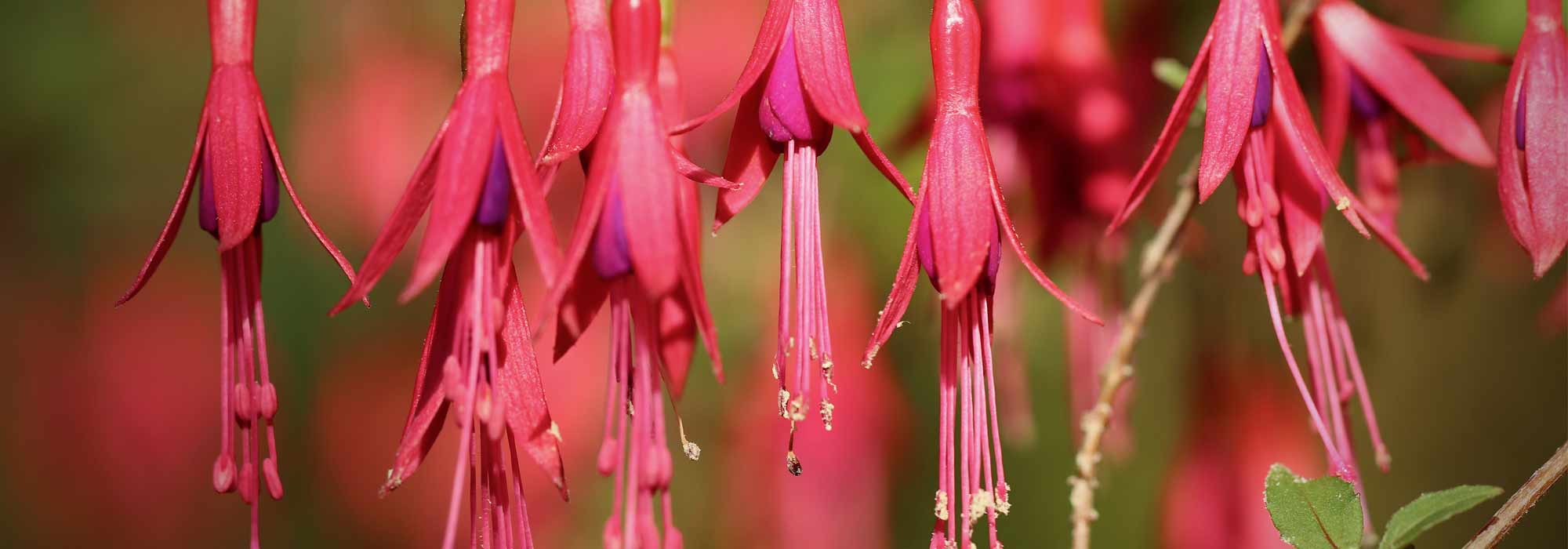
Fuchsia: the 6 hardiest species and varieties
The best cold-hardy fuchsias
Contents
When talking about hardy fuchsias, it’s important to distinguish between two clearly distinct categories. Indeed, some fuchsias considered hardy can withstand cold, but they have difficulty regrowing and flowering again after winter. In contrast, certain species withstand cold well and then readily regrow before flowering abundantly.
So here is our selection of the 6 most hardy fuchsia species and most reliable.
Fuchsia magellanica: the hardiest!
Fuchsia magellanica is a bush plant with good hardiness. It is even the hardiest Fuchsia, as it can withstand temperatures around -15°C. Perennial, Fuchsia magellanica forms a dense bush of small ovate leaves. It produces (July to October) pendulous, delicate and fragrant flowers, with red sepals and violet petals.
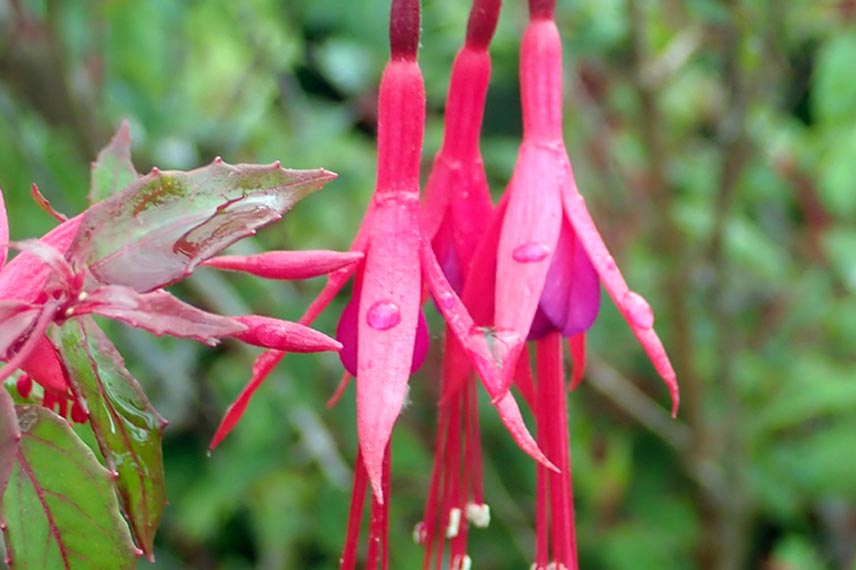
Growing Fuchsia magellanica
Grown in garden, Fuchsia magellanica is used in shaded flowerbeds. Plant in March or September, in humus-bearing, cool soil (not completely drying out in summer). The bush prefers fertile, well-drained soils and continuously humid atmospheres. In mild climates, where there is little or no frost, its stems are cut back by half to obtain a denser habit. In harsh climates, however, with frosts below -15°C, cut stems back to 10 cm from soil and protect the stump by mulching or earthing up.
Some hardy varieties of Fuchsia magellanica
Among numerous varieties of Fuchsia magellanica (thousands have been created through cross-breeding), some particularly deserve your interest for their hardiness and their ornamental qualities.
- Fuchsia magellanica var. gracilis and its beautiful bell-shaped flowering with particularly dense colours. Planted in cool soil, it favours a shaded position or dappled light, and can tolerate non-scorching sun.
- Fuchsia magellanica var. arauco and its small flowers with pinkish-red tubes, white sepals and violet corollas. Easy to grow, it appreciates sunny and semi-shaded situations as well as cool, well-drained soils.
- Fuchsia magellanica var. molinae and its magnificent flowers white shaded with pink. Grow in shaded position, where it thrives easily as a bush.
Fuchsia regia 'Reitzii': long bicolour flowering
The Fuchsia regia ‘Reitzii’ is a shrubby species among the hardiest, with hardiness around -10 to -12°C. It is also the most widely grown variety for garden ornamentation. Vigorous, almost climbing young plant, it bears a semi-evergreen foliage (to about -5°C) and sarmentous shoots. This magnificent fuchsia is above all valued for its long bicoloured flowering (August to November). Its small red and violet flowers with incurved sepals are followed by small edible berries that develop a blackish‑violet colour.
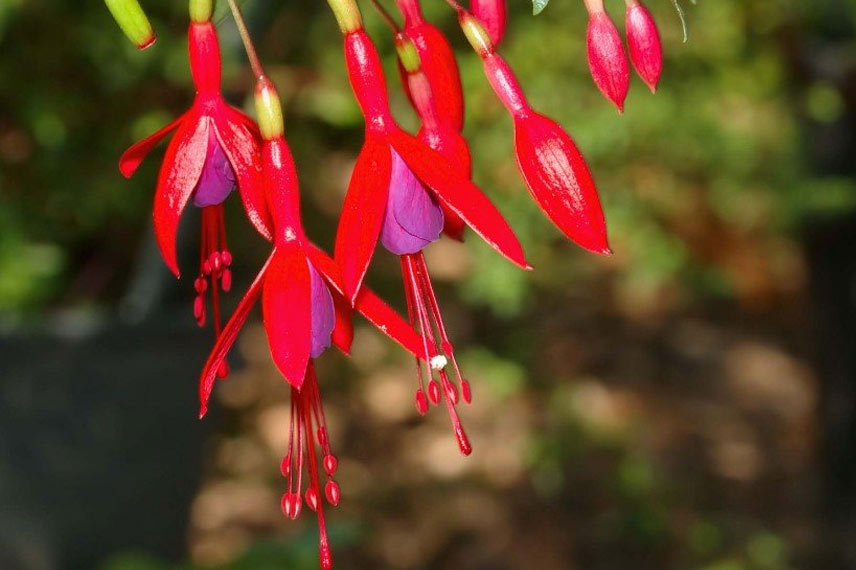
Growing the royal fuchsia
Vigorous variety, Fuchsia regia ‘Reitzii’ is planted in spring (March and April), or at end of summer (September). It favours oceanic climates, light shade, and cool, light soils. Prune stems by half in spring in mild climates to maintain a compact habit. Elsewhere, prune stems in autumn and protect the stump by mulching or by earthing up. An annual pruning after flowering stimulates its growth and flowering the following year. Fuchsia regia ‘Reitzii’ survives cold winters by regrowing from the stump the following spring.
Discover other Perennial Fuchsia
View all →Available in 1 sizes
Available in 2 sizes
Available in 1 sizes
Available in 1 sizes
Available in 2 sizes
Available in 2 sizes
Available in 2 sizes
Available in 1 sizes
Available in 1 sizes
Available in 1 sizes
Fuchsia 'Alice Hoffman': numerous small red-and-white flowers
Fuchsia ‘Alice Hoffman’ is an old variety valued for its floribundity and good cold resistance. It is indeed hardy down to -11°C. This jaunty little bush forms a dense, slightly trailing habit. It has abundant deciduous foliage, a compound of narrow, lanceolate dark green leaves. Its flowering (June to September–October) produces a multitude of small red-and-white bell-shaped flowers that renew throughout the growing season.
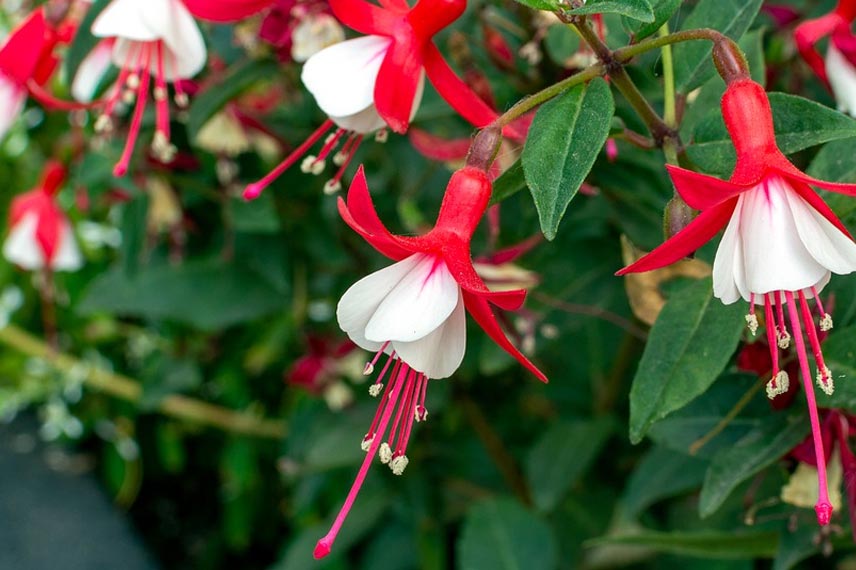
To grow hardy Fuchsia ‘Alice Hoffman’
Fuchsia ‘Alice Hoffman’ is grown in open ground, or in a large pot, in a shaded or part-shaded position. This old hybrid variety prefers fertile, light and well-drained soils. During growth, it should be fed fortnightly with a fertiliser for fuchsias. Remove dead flowers and dry leaves regularly. Cut back in autumn after flowering. Hardy down to -6°C without protection, it can withstand frosts down to -11°C if sheltered over winter.
Read also
Fuchsia: how to overwinter?Fuchsia 'Mrs Popple': large, bell-shaped blooms in red and purplish-violet
Fuchsia ‘Mrs Popple’ is a bush with upright branches, hardy down to -10°C. An old variety, it has deciduous foliage made up of dark green leaves. Particularly prized for its abundant flowering, the hardy Fuchsia ‘Mrs Popple’ produces numerous large bell-shaped flowers in scarlet red and purplish-purple, which continue until late in the season (June to October).
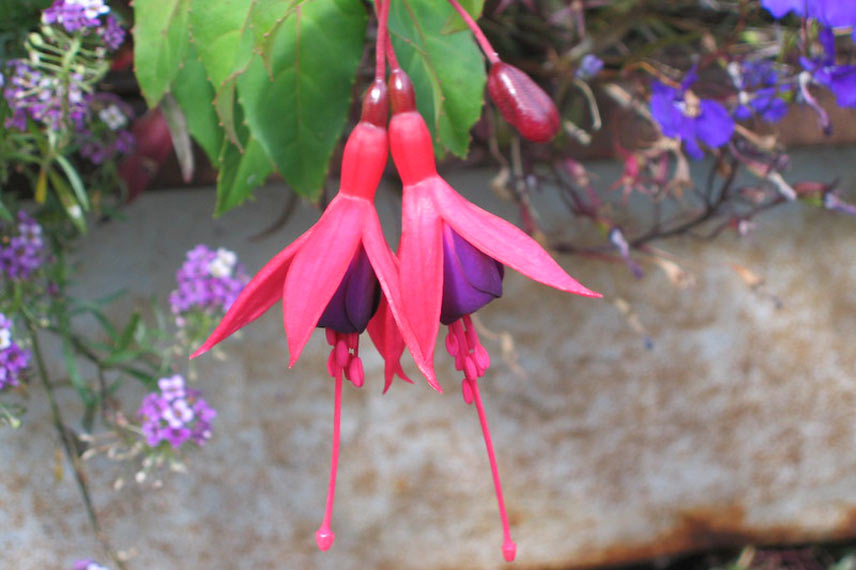
Fuchsia Mrs Popple – QG Aqiao – Flickr
Growing Fuchsia ‘Mrs Popple’
Vigorous, Fuchsia ‘Mrs Popple’ can be grown in ground or in a large pot. Plant it preferably in March. It prefers fertile, moist, well-drained soils, and partly shaded to shaded positions. This Fuchsia can be grown in outdoor borders, or in a greenhouse or conservatory, and should be watered regularly but not excessively during dry periods. In cold climates, overwinter it indoors. Elsewhere, cut it back to 15 cm above ground in autumn and cover it with a thick mulch of dead leaves or fern fronds, all wrapped in horticultural fleece or covered with a waterproof tarpaulin.
Fuchsia 'Blue Sarah': white corollas and mauve skirt
Fuchsia ‘Blue Sarah’ is a bush with an erect habit, capable of withstanding -10°C provided it is protected. Suspended among glossy foliage and resplendent with health, the bicoloured flowers of this Fuchsia x hybrida are dressed in a mauve skirt, double and ruffled, topped by a white corolla. This abundant and spectacular flowering lasts well into the season, extending from June to October.
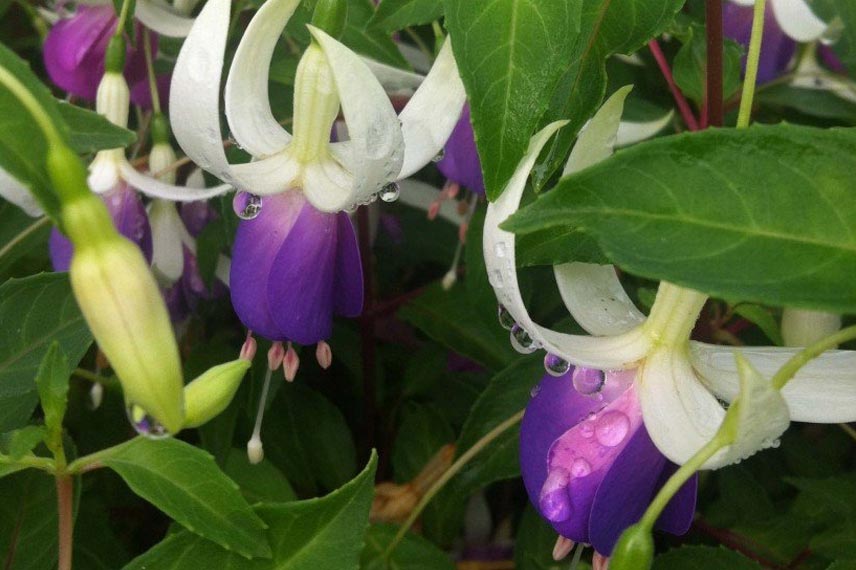
To grow Fuchsia ‘Blue Sarah’
Easy to grow, Fuchsia ‘Blue Sarah’ can be grown in garden, in a flowering container or as a hanging basket. It is planted from March to May, in a sunny, part-shaded or shaded position, in fertile, well-drained, cool soil. During growth, the plant requires feeding every 15 days using a liquid fertiliser for fuchsias. The bush also needs to be cut back in autumn, after flowering. Hardiness of Fuchsia ‘Blue Sarah’ reaches -5°C without any protection. A cold tolerance that can reach -10°C if the plant is properly sheltered.
Fuchsia 'Genii': fuchsia-pink and violet flowers
Fuchsia ‘Genii’Fuchsia ‘Genii’ is an old, bushy variety with a compact habit, prized for hardiness around -10°C. This attractive bush is endowed with very bright foliage composed of narrow deciduous leaves of a green colour tinged with yellow. It flowers from June to September and produces abundant quantities of small bicoloured bell-shaped flowers in fuchsia-pink and violet.
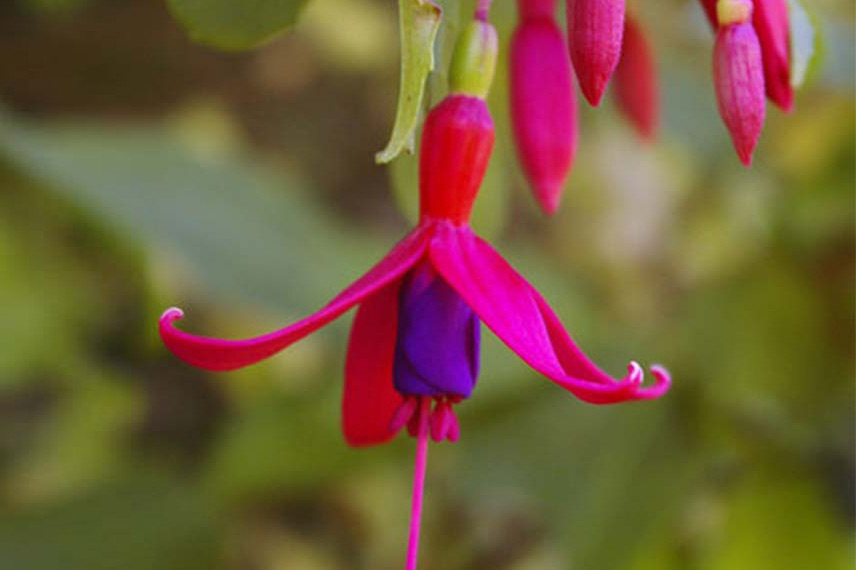
To grow Fuchsia ‘Genii’
Fuchsia ‘Genii’ is grown in a rich, moist and well-drained substrate. It is planted in March in shaded or semi-shaded positions. It can be grown in open ground in regions with mild winters, and it can be grown in a large pot and brought indoors in cold climates. Its hardiness reaches -6°C without protection, and up to -10°C when sheltered. While it dislikes drought and needs regular watering, Fuchsia ‘Genii’ does not tolerate stagnant water.
Useful links
To learn more about growing Fuchsia:
- learn how to plant, prune, grow and maintain your Fuchsias.
- Discover how to overwinter Fuchsia in pots and in the ground.
- Finally, discover our selection of shrubby Fuchsias and hardy ones.
- Subscribe!
- Contents
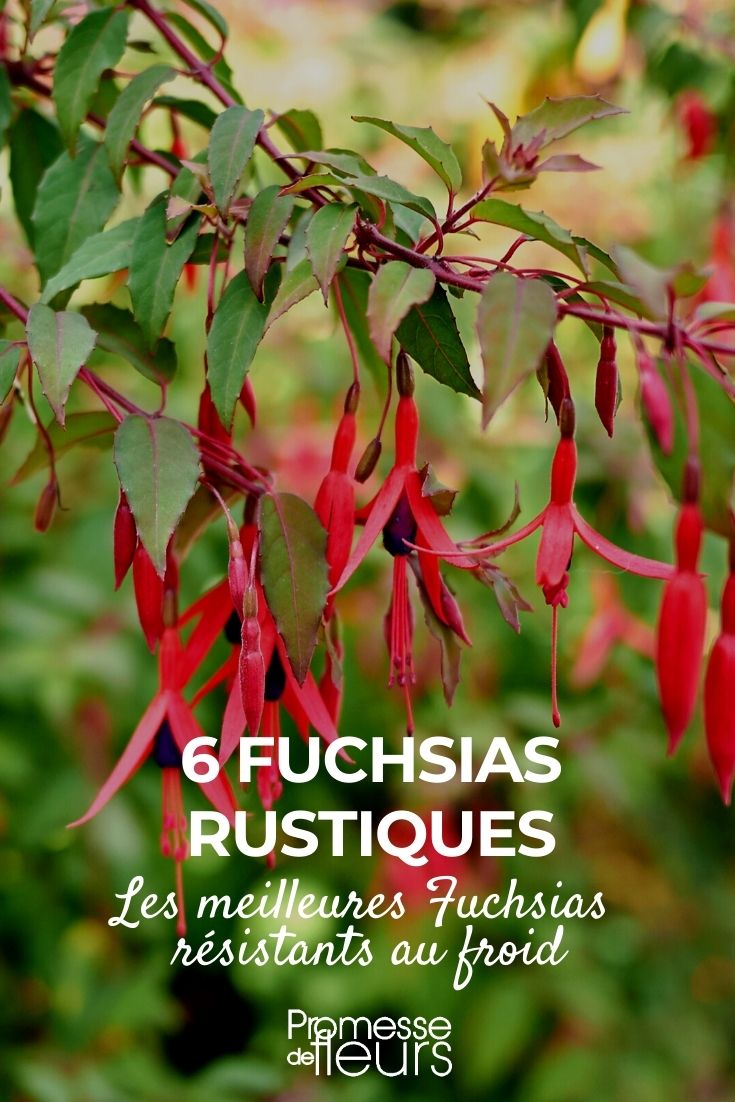

































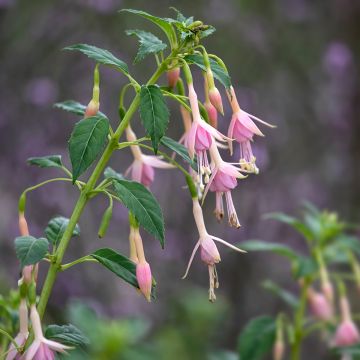
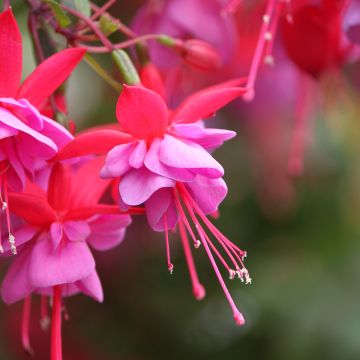
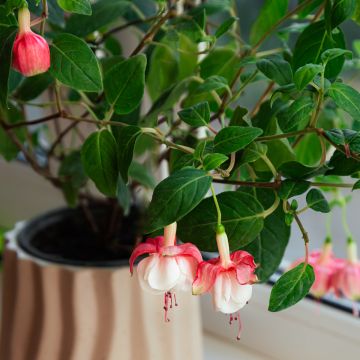
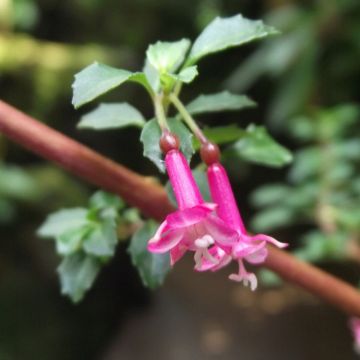


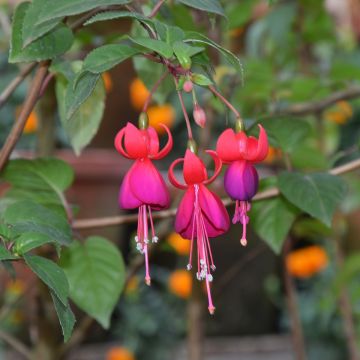
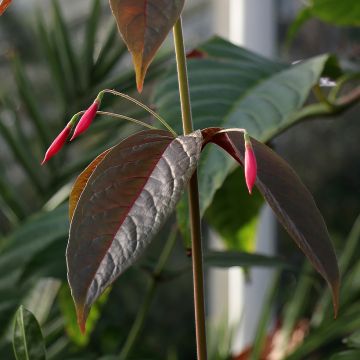
Comments